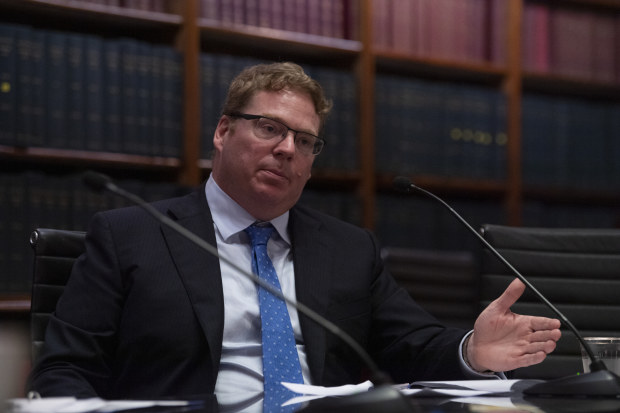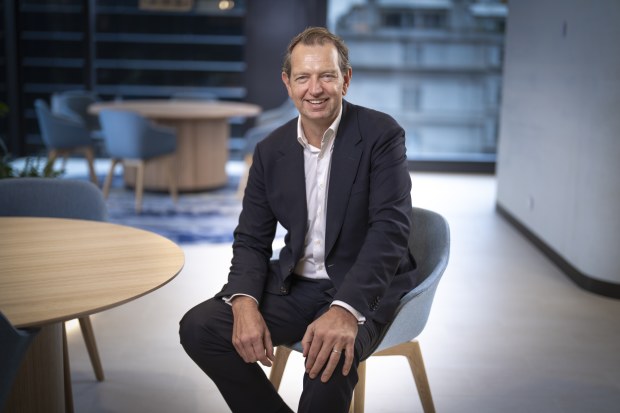ExclusiveFixed price operations could be coming to private hospitals
Michael SmithHealth editorAug 25, 2024 – 8.00pmListen to this article7 minThe federal government is considering introducing a fixed-price funding model for the country’s 650 private hospitals under a raft of proposals evaluated to fix the sector, and has told key players it is willing to let more facilities close rather than prop up inefficient operations.
Health Department Secretary Blair Comley told a meeting of top health industry chief executives in Canberra on Friday there were more private hospital beds in Australia than the country needed.
He indicated the government was unlikely to offer a quick fix ahead of a federal election, with any recommendations coming out of Health Minister Mark Butler’s inquiry into the $22 billion sector likely to skew towards the longer term.
One option discussed on Friday was the adoption of a “national efficient price” to set a baseline price for services, a model used in the public system.
The price-fixing mechanism could replace existing complex arrangements where hundreds of insurers and private hospitals individually negotiate funding arrangements.
The idea has already split the industry, with some support from not-for-profit hospitals, but it would likely be resisted by bigger players such as Ramsay Health Care. Doctors are neutral.
Related Quotes
RHCRamsay Health Care
$46.790 -0.23%View RHC related articlesAug 23Nov 23Mar 24Aug 2440.50045.00049.50054.00058.500Updated: Aug 26, 2024 – 12.34pm. Data is 20 mins delayed.Recommendations from the Health Department’s two-month review into the viability of the country’s 650 private hospitals are not yet public and are due to be sent to Mr Butler shortly.
The government is under pressure to help a system regarded by some in the industry as being inefficient, but also a critical part of the healthcare system, a major employer and a key driver of economic activity. Regional areas are particularly sensitive to the government.
The review has also exposed the inability of hospital operators and health insurers to work together to fix the system. St Vincent’s earlier this year threatened to walk away from its funding contract with insurer NIB before a new deal was brokered last week.
Health Department Secretary Blair Comley has told hospital operators not to expect a quick fix to their problems. Louise Kennerley
While hospitals had been lobbying the government to force insurers to tip more funding in, people who attended the meeting said that seemed to be off the table.
They said the mood among the hospitals was “grim” after the meeting, which was attended by Ramsay’s Australian boss Carmel Monaghan, Healthscope chief Greg Horan, Medibank Private boss David Koczkar, Calvary Health Care national chief Martin Bowles, HBF Health chief Lachlan Henderson, and a representative from the Australian Medical Association.
Mr Comley would not tell the meeting what the recommendations were, but in a slide presentation he outlined the challenges the government had identified. He said the government was aware that the closure of maternity and mental health beds were eroding the value of private health cover for families.
The government has also made it clear to industry players that private hospitals in regional areas are essential and could be given special consideration.
But with only six weeks of parliament left before the end of the year and an election looming, few were confident Mr Butler’s inquiry would provide any meaningful solution in the current term of government.
Medibank CEO David Koczkar says the number of empty private hospital beds is rising. Eamon Gallagher
It is understood the AMA has told the government it feels the process should be the first step for broader reform.
Mr Butler’s office declined to comment.
Industry predictions vary, but about 70 private hospitals have closed since 2019. Independent analysis suggests there has only been a net reduction of four when openings are factored in.
Mr Butler launched the inquiry in June due to concerns that more hospitals could close, forcing more patients into an already stretched public system.
Insurance industry body Private Healthcare Australia took the rare step of singling out Healthscope, the country’s second-largest operator owned by Canada’s Brookfield, for criticism. Healthscope is in talks with lenders to restructure its $1.6 billion debt load.
“Health funds will certainly not use their members’ money to increase profits for foreign private equity firms like Brookfield, the owner of Healthscope Hospitals,” PHA chief executive Rachel David said
“Brookfield is managing more than $1 trillion in assets. They can afford to bail themselves out of some bad business decisions in Australia.”
Healthscope responded by saying that three-quarters of Australia’s private hospitals were losing money due to a surge in cost inflation, wage rises for nurses and hospital staff, and escalating energy and supplier costs, which had created an “industry-wide viability crisis”.
“Australia has one of the most efficient private healthcare systems in the world,” a Healthscope spokesman said. “The claim it can be solved by finding more efficiencies is, at best, deliberately uninformed and, at worst, dangerous.
“Hospital operators will never take risks with clinical care and patient safety.”
Terry Barnes, a former health adviser to the Howard government, said insurers should not be asked to help inefficient hospitals.
“If operators and their backers run inefficient facilities, or sink their own money into costly and unprofitable white elephants, insurers and insured shouldn’t carry the can for operators’ poor management decisions through inflated premiums and out-of-contract patient costs,” he said in an opinion piece published by The Australian Financial Review.
Mr Barnes, a player in 1995 negotiations for contracting arrangements between health insurers and hospitals, argued the current framework established by Labor was no longer fit for purpose.
“What’s really needed is wide-scale policy reform that understands current and future market and provision cost pressures. Although Butler has missed the main private health reform game, providers and insurers can’t just run to mummy, whether the government or the ACCC, to resolve their differences,” he said.
Medibank, Australia’s largest health insurer, says only 64 per cent of private hospital beds are being utilised.
“We do see hospitals closing, but we also see hospitals opening. We have seen growth in hospital beds since the start of the pandemic in the private sector. It is a good opportunity to take the pulse of the system,” Mr Koczkar said.
Analysis by Macquarie’s Andrew Buncombe, which the government reviewed as part of the inquiry, argues that private hospitals must repurpose rooms which are not used efficiently. However, this would require more capital, and there was no guarantee that a funding injection into the private sector would be allocated where it was needed most.
“Wait lists in the public system are sometimes for procedures that beds in the private system are not set up to handle,” he said.
Hospitals say they are efficient and that their main challenge is managing costs.
The completion of the inquiry comes as a leading industry think tank warned Australia’s soaring pipeline of hospital projects was doomed for delays and cost blowouts as the already strained workforce struggles to keep up with demand.
Analysis by Infrastructure Partnerships Australia found the value of projects in the works has doubled to $42 billion in just two years, and labour capacity constraints were particularly acute in Queensland, where the government has 15 projects scheduled for completion by 2028, including three new major hospitals.
- Forums
- ASX - By Stock
- RHC
- Ann: FY24 Earnings Update
Ann: FY24 Earnings Update, page-14
-
- There are more pages in this discussion • 4 more messages in this thread...
You’re viewing a single post only. To view the entire thread just sign in or Join Now (FREE)
Featured News
Add RHC (ASX) to my watchlist
 (20min delay) (20min delay)
|
|||||
|
Last
$43.89 |
Change
-2.030(4.42%) |
Mkt cap ! $10.08B | |||
| Open | High | Low | Value | Volume |
| $45.78 | $45.96 | $43.89 | $38.38M | 864.7K |
Buyers (Bids)
| No. | Vol. | Price($) |
|---|---|---|
| 6 | 11488 | $43.88 |
Sellers (Offers)
| Price($) | Vol. | No. |
|---|---|---|
| $44.14 | 501 | 2 |
View Market Depth
| No. | Vol. | Price($) |
|---|---|---|
| 6 | 11488 | 43.880 |
| 1 | 100 | 43.810 |
| 5 | 9806 | 43.800 |
| 2 | 983 | 43.770 |
| 2 | 815 | 43.750 |
| Price($) | Vol. | No. |
|---|---|---|
| 44.140 | 501 | 2 |
| 44.190 | 2548 | 2 |
| 44.220 | 3764 | 1 |
| 44.230 | 351 | 1 |
| 44.250 | 700 | 1 |
| Last trade - 16.10pm 28/08/2024 (20 minute delay) ? |
Featured News
| RHC (ASX) Chart |
The Watchlist
HAR
HARANGA RESOURCES LIMITED.
Peter Batten, MD
Peter Batten
MD
Previous Video
Next Video
SPONSORED BY The Market Online







